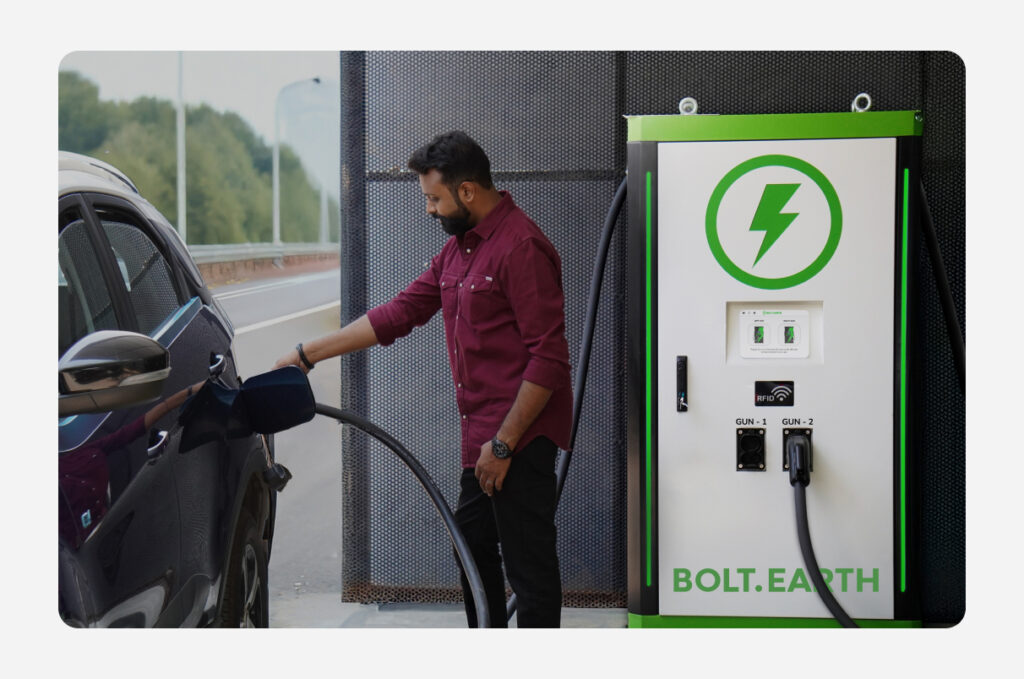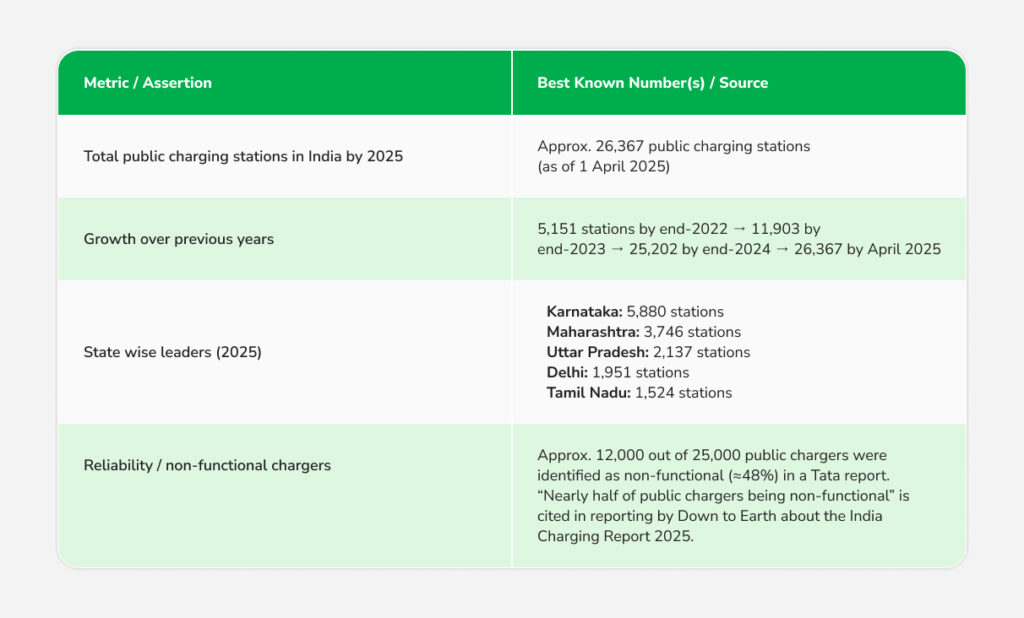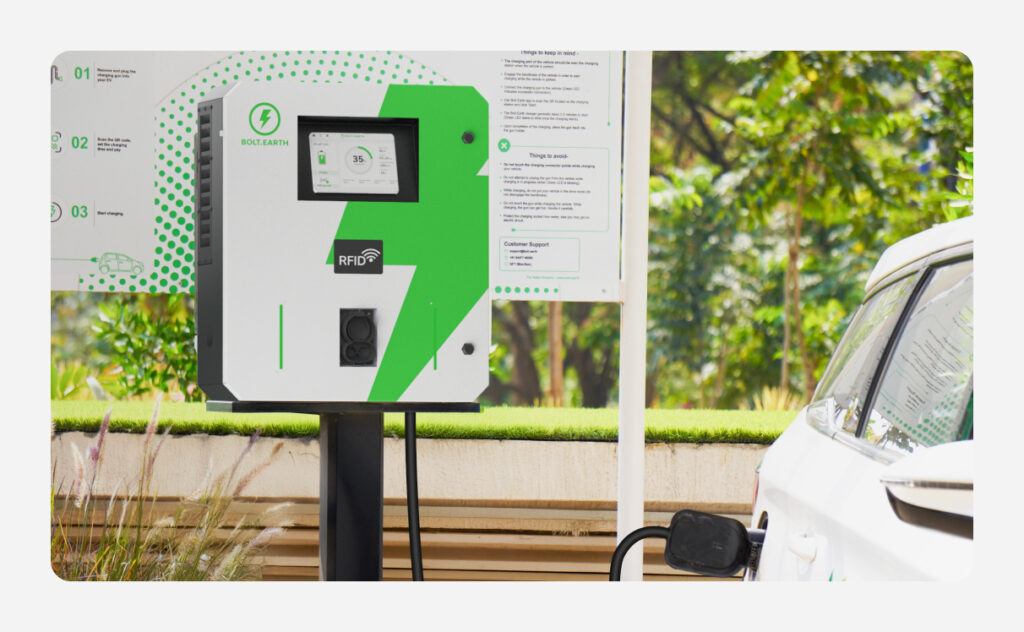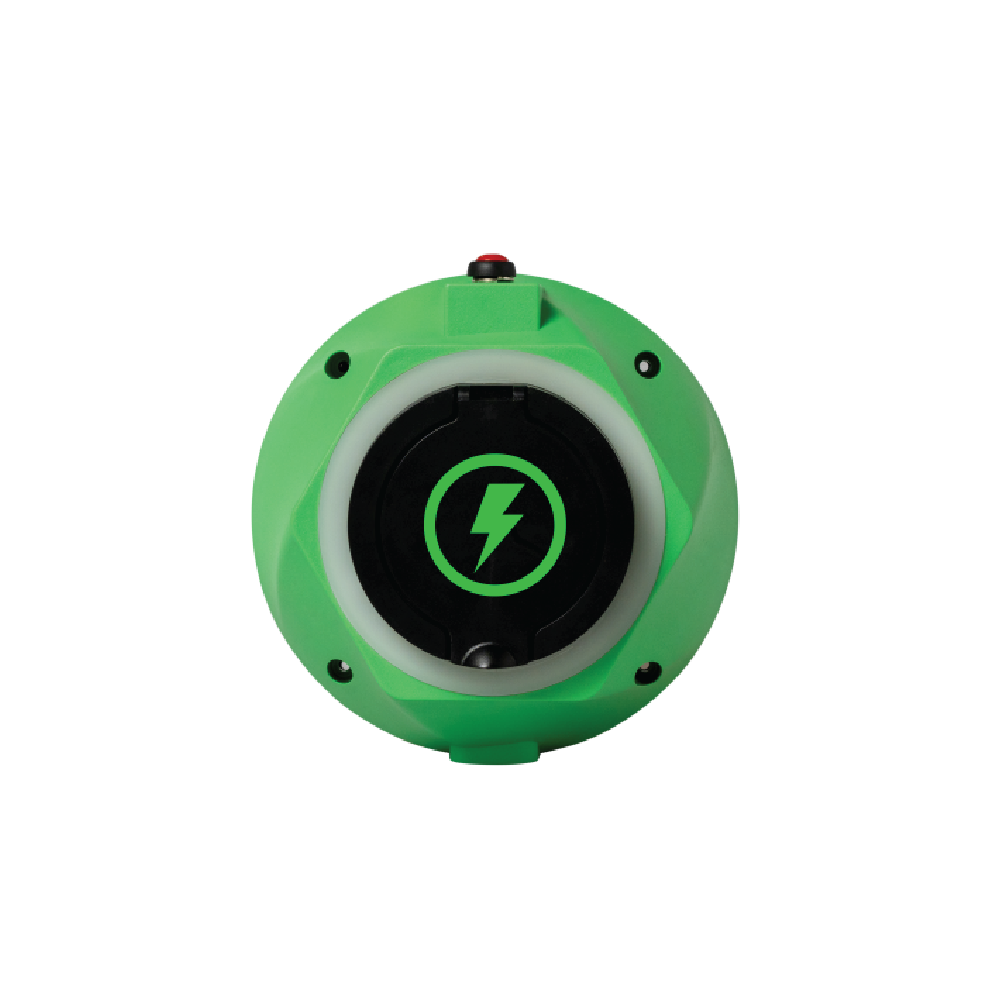Why DC Fast Chargers Are Critical for India’s Highway EV Push
Raghav Bharadwaj
Chief Executive Officer
Published on:
15 Oct, 2025
Updated on:
04 Dec, 2025

EV highway charging in India is rapidly becoming a priority as more drivers demand the ability to travel long distances without extended stops. Although the charging infrastructure in India has grown fivefold since 2021, gaps persist, especially on intercity routes.
This blog analyzes why DC fast chargers are now essential for India’s highway electrification, reviews current infrastructure and policies, and outlines what’s needed by 2030. It offers data-driven insights for EV stakeholders, infrastructure planners, and mobility professionals.
Additionally, we also explore three key dimensions shaping that shift:
- Why DC fast chargers are indispensable for enabling long-distance EV travel and supporting heavy-duty electric vehicles on highways.
- The current state of highway EV charging infrastructure in India
- Government initiatives and policy frameworks driving large-scale fast-charger rollout, alongside the challenges
The Role of DC Fast Charging for Highway Travel

Highway travel demands quick, reliable charging, something only DC fast chargers can deliver at scale. Unlike slower AC chargers (ideal for home or overnight use), DC fast chargers supply 30–240 kW or more, replenishing an EV’s battery to approx. 80% in under an hour. On a 300 km intercity trip, stopping for 6–8 hours to charge via AC charger is impractical; dc fast charging solutions reduce dwell time to 30–60 minutes, making EVs viable highway cruising.
Most modern EVs have onboard AC chargers limited to approx. 7 kW (in mass-market Indian models) or up to 11–22 kW in premium variants. Even if a higher-power AC station is available, the vehicle itself restricts charging speed.
DC fast charging bypasses the onboard converter, feeding power directly to the battery at its maximum intake rate. For long-range EVs with 40-60 kWh big battery packs, relying on 7 kW AC would require 8-10 hours for a full charge — untenable on highway EV charging stations.
Government guidelines now mandate at least one fast charging station every 100 km on highway corridors for long-range EVs and heavy-duty vehicles. DC fast chargers are necessary to match refueling times of petrol stops, ensuring both private and commercial EV drivers can get back on the road quickly.
Additional factors make AC chargers unsuitable for highways:
- Travel patterns: Highway drivers cover hundreds of kilometers daily and won’t wait hours to charge. DC fast charging solutions add significant range during short breaks, unlike AC charging, which suits overnight or workplace use.
- Heavy vehicles and buses: E-buses and trucks have large battery capacities and tight operating schedules. They require high-power DC fast charging solutions (often 90–240 kW). Battery swapping is being explored, but DC fast chargers remain the primary solution for heavy EVs on highways. The Golden Quadrilateral freight corridors are a focus for deploying DC fast chargers under new schemes.
- User expectations: To encourage EV adoption, highway EV charging stations must match the convenience of petrol pumps. Long queues or hours-long waits discourage intercity EV travel. In 2025, 35% of EV users used fast chargers monthly, up from 21% in 2023, a sign of growing reliance. AC points can supplement, but cannot meet core demand for rapid highway charging.
India’s push to electrify logistics and public transport further highlights the need for dc fast charging solutions. High-utilization vehicles like buses and trucks can’t afford multi-hour stops; they need high-power DC hubs that enable rapid turnaround. In 2024, the government recognized this by funding the installation of high-capacity DC chargers (up to 360 kW) at bus depots, metro stations, and highway EV charging stations. Without widespread DC fast charging, India’s EV ambitions risk stalling due to “range anxiety” and lost productivity.

Current State of EV Highway Charging in India (2025)

India has roughly 29,000 public charging points as of mid-2025, up from approx. 6,500 two years ago. This explosive growth has been urban-centric —Karnataka leads with approx. 5,765 chargers, followed by Maharashtra, Uttar Pradesh, Delhi, and Tamil Nadu. Highways and smaller towns still lag in charger density, reflecting an urban skew. Nationally only about 35% of public chargers are DC fast chargers; the rest are slower AC outlets.
Highway corridors show patchy progress. Routes like Delhi–Jaipur (NH48) have fast chargers roughly every 80–100 km, while the Mumbai–Pune Expressway offers dense coverage (~50–70 km). However, many highway chargers non-functional or offline, eroding user confidence. Frequent outages stem from grid stress and poor maintenance. On average, public chargers operate only 60–70% of the time due to grid fluctuations and connectivity problems. While the numbers of stations are rising, reliability and fast-charger availability remain bottlenecks.
Government Policies and Infrastructure Initiatives

Policy support has driven charging rollout, with national and state-level efforts accelerating infrastructure:
- PM E-DRIVE and e-Bus Sewa: The PM E-DRIVE program (2024) allocates ₹2,000 crore for public chargers, targeting 22,100 new fast chargers for four-wheelers by March 2026.
- Charging Station Spacing Mandates: Guidelines require one charging station every 3×3 km in cities and every 25 km on highways. This grid approach could dramatically improve reliability.
- State EV Policies: States offer incentives like Maharashtra waiving tolls and mandating chargers in new real estate projects. Delhi provides capital subsidies and plans a fast charger every 5 km; Uttar Pradesh aims to set up 300 new stations with tax breaks. Southern states like Karnataka and Tamil Nadu offer concessional tariffs and public-private partnerships (PPP model) to attract charger investments, helping Karnataka lead in charger count.
- Regulatory Facilitation: The Ministry of Power’s 2025 guidelines introduced safety and interoperability standards. EV charging now has “infrastructure” status and a 5% GST rate. A unified “super app” is being piloted to map real-time charger status across networks.
While policies have catalyzed investment, uneven implementation and execution challenges limit full impact. The focus now is translating targets into reliable, on ground DC fast chargers, especially in highway EV charging stations.
Emerging EV Traffic Patterns and Electrified Corridors

EV usage in India is extending beyond city limits. Early patterns show highway routes are leading the electrification push and how different user groups are behaving:
- High-Traffic Corridors: Delhi–Jaipur, Mumbai–Ahmedabad, and Mumbai–Pune highways have fast chargers every 50–80 km. Bengaluru–Mysore has ~100 km gaps. A pilot on the Delhi–Agra–Jaipur route aims to create India’s first 500 km electric highway.
- Fleet Operators and Commercial Use: Electric taxis, delivery fleets, and buses increasingly use highways. Electric bus routes are being tested between cities as part of the e-Bus program. These commercial players value reliability and speed above all. As a result, fleet operators often coordinate with specific Charge Point Operators (CPOs) to ensure reserved or well-maintained chargers on their routes.
- Personal EV Travel Long-distance EV travel is growing. Drivers plan meticulously: using multi-operator apps to locate chargers and check real-time status. Online EV forums share road trip experiences and reliable dhabas or rest stops. A common behavior is dual-app usage, keeping two different charging network apps to cross-verify if a station is actually online. This indicates that personal EV drivers are adapting to the current unreliability by being extra prepared.
- Regional Differences: EV traffic is highest on highways near EV hubs. The Delhi-NCR region sends many EVs toward Jaipur/Chandigarh; Mumbai-Pune has daily electric commuters; Bengaluru-Chennai and Hyderabad-Vijayawada corridors are picking up as South India leads in EV two-wheeler adoption. In contrast, eastern and central India see fewer EVs on highways due to lower adoption and fewer highway EV charging stations.
Challenges in Fast Charger Rollout
Despite momentum, several challenges hinder DC fast chargers deployment:
- High Upfront Costs and ROI Concerns: 60 kW DC charger costs ₹3–7 lakh for equipment alone; full setups run into crores. Utilization is low, often just 5% usage, making ROI difficult for CPOs. Low EV volumes and range anxiety create a Catch-22: idle chargers discourage adoption, but adoption won’t grow without chargers.
- Grid Capacity and Reliability: Remote highways lack robust grids. Voltage fluctuations and weak feeders cause outages. Some sites have only 60 kW connections, insufficient for multiple 150 kW chargers. Utilities (DISCOMs) must reinforce substations along new EV corridors. Pilots on the Mumbai–Pune corridor use solar PV and battery banks to buffer grid strain.
- Operational Reliability and Maintenance: Many chargers suffer from poor maintenance, software faults and interoperability issues. Payment and app fragmentation add friction. The government’s push for a unified payments interface (UEI) and new uptime standards aims to improve reliability.
- Land and Permitting Hurdles: Prime highway locations are scarce. The best spots are existing highway services or petrol pumps – hence oil companies have an advantage by leveraging their network. Private CPOs often partner with these petrol pump or highway restaurants for space. Even so, the process of getting approvals from multiple agencies (highway authorities, local bodies, utilities) can be slow. Bureaucratic delays in permits and right-of-way have been cited as reasons some announced stations haven’t materialized. The government is exploring measures like “land pooling” or co-locating chargers with existing infrastructure to simplify this. For highways specifically, NHAI (National Highways Authority) is carving out EV charging spaces in new amenity projects to streamline deployment.
- Power Tariffs and Viability: High-capacity chargers face punitive tariffs. Demand charges inflate operating costs. Some states offer concessional EV tariffs and waive demand chargers, critical until utilization improves. Without it, the cost of running an ultra-fast charger would be very high, deterring usage and slowing rollout.


![Top EV Launches in India 2025: Cars, Scooters and 3-Wheelers [+Bolt.Earth Charger Compatibility]](https://bolt-wordpress.bolt.earth/wp-content/uploads/Top-EV-Launches-in-India-2025_-Cars-Scooters
-3-Wheelers-Bolt.Earth-Charger-Compatible.jpg)
Dec 08, 2025 • EV Technology and Trends
Top EV Launches in India 2025: Cars, Scooters and 3-Wheelers [+Bolt.Earth Charger Compatibility]
Read More


